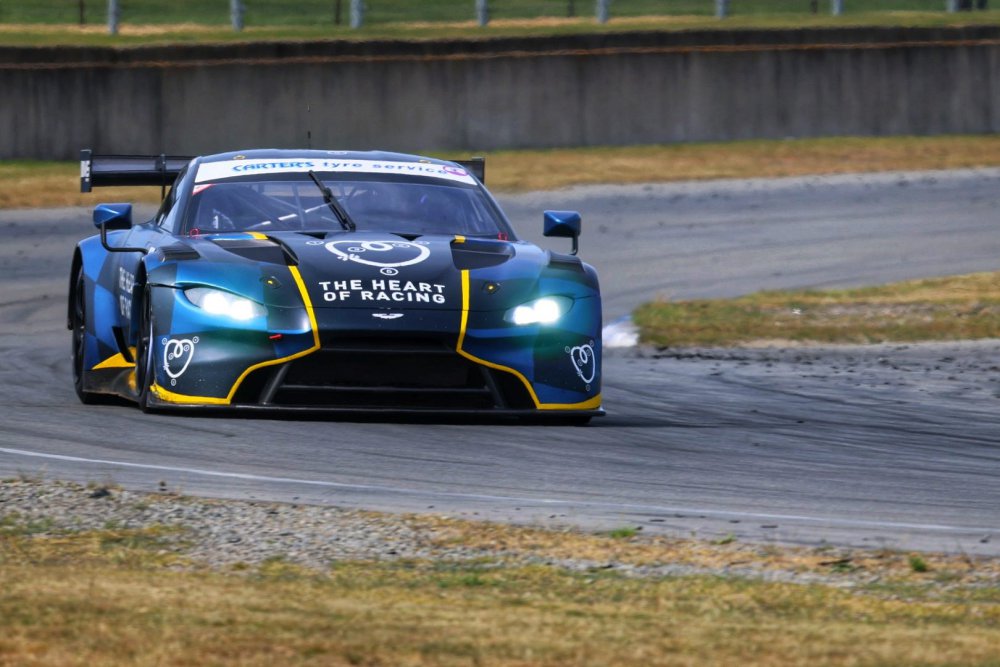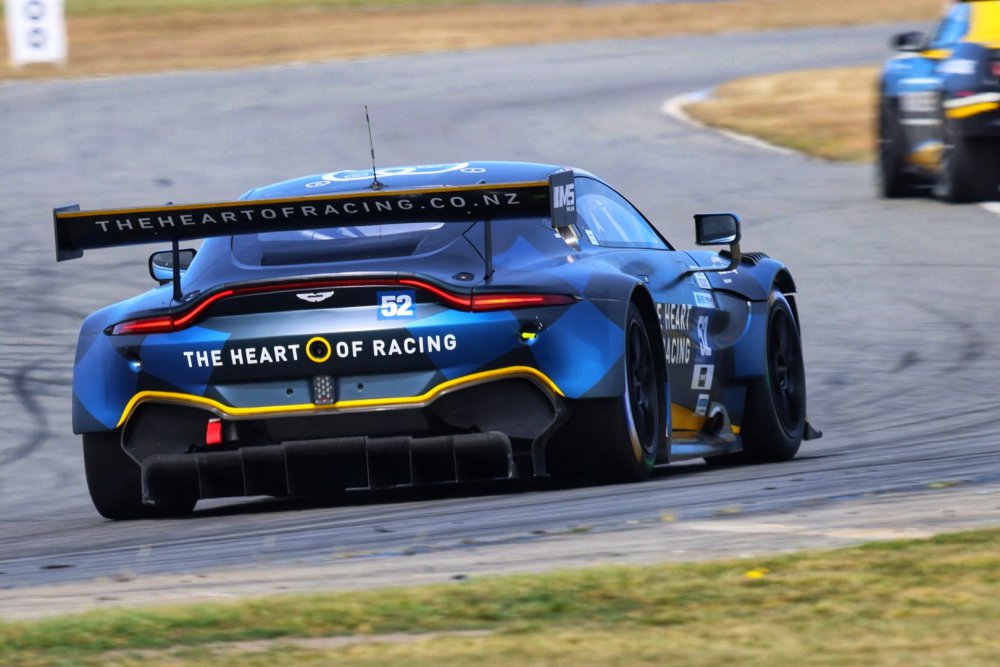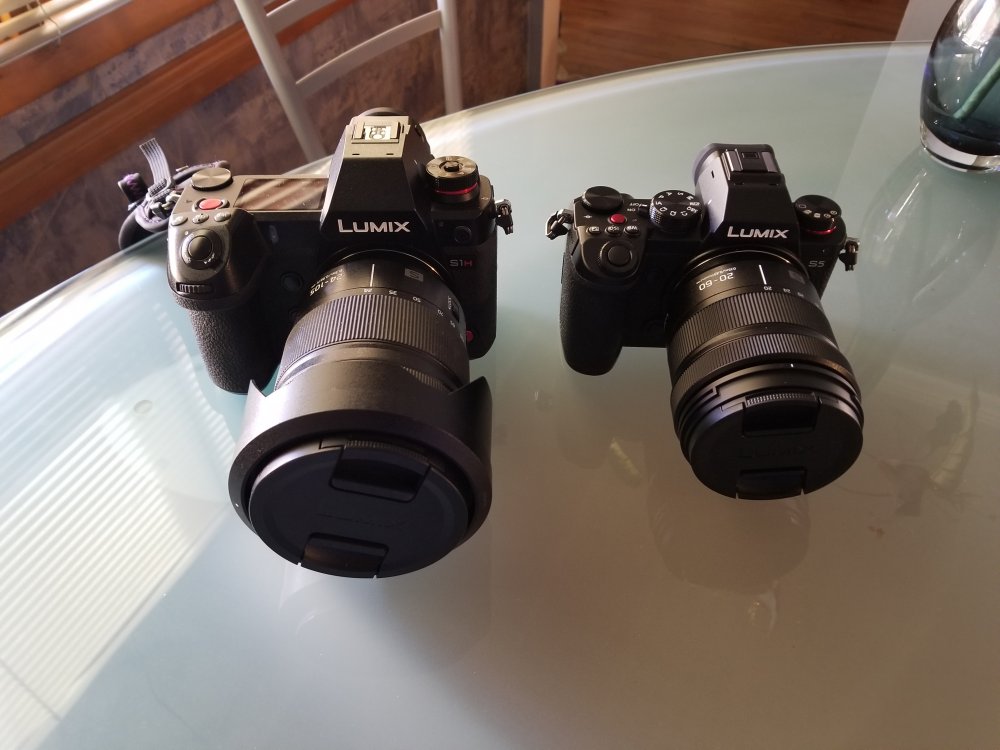Leaderboard
Popular Content
Showing content with the highest reputation on 10/04/2020 in all areas
-
Yeah the devil is in the detail! R6 dont have reliable long session 4k is a huge bummer, the C70's AF apparently is just slightly better than C300 III but nowhere near the same as DPAF II on the R5/R6/1DXIII. This race I was shooting in cinestyle instead of clog because of fast turnaround we need (due next morning), editor have no problem editing 4k50p on H.264, 4k100p is still quite laggy but we do not using too many of those as our is for TV segment while the main media team is the artsy stuff. S5 should be really good for your use, I got S5 myself cause it is quite good for the price you pay for the features and more for my side jobs (with anamorphic and stuff). R5 is mainly for company work and some photography. The main video guy for this race team is still on GH5. Here is photo I took on R5 with the RF 600mm, the 600mm is pretty good for the price/size/weight.2 points
-

Andrew Reid interview on Golden Hour Podcast AMA
John Matthews and one other reacted to Dave Maze for a topic
Hey guys! I’m about to interview our very own @Andrew Reidon my podcast Golden Hour! Reply with any questions you have for him and I’ll try to get them in the show!2 points -
Canon EOS R5/R6 user experience
ntblowz reacted to herein2020 for a topic
That is pretty cool, it seems like there is more than meets the eye when comparing the R5 and R6. I think if the R6 had even 1 4K mode that didn't overheat it would be far more useable. When the timer got down to 5min I tried switching out of CLOG thinking maybe H264 would add more time (no go), then I dropped down to 4K30 and it only added 2min. I guess I just had to experience everything first hand to decide it wasn't for me. There's only so many reviews you can watch until you have to see for yourself. Based on my R6 experience I cancelled my C70 preorder, am returning the R6 and ordered a Panasonic S5. For my particular use cases the S5 ticks every box (dual slot recording, XLR audio via adapter, no overheating, 4K60, H264 video files, useable photography features, etc.). I think if the R5 offered dual slot video recording and Canon offered an XLR adapter for it along with the one mode that does not overheat that would have been enough to make me consider the R5. Video recording redundancy and audio is pretty big for me. I have no doubt that I would have enjoyed the photography features.1 point -
Actually it appears to be a broadcast camera, with a few filmmaking skills (new VLog L with 1 stop higher dynamic range) thrown in. Also missing IBIS? I am guessing they're going after the Top Gear crowd that caused the blunder of the GH5s in the first place?1 point
-
That's part of the reason I use m43 cameras - the long telephoto lenses are much smaller (and the Pana 45-200 is really cheap used for the original version, but you need the current 'mark 2' version to get 'dual-IS' support). If you're shooting 1080p on the G9, enabling 'Extra Tele Conversion' gives you x2.7 zoom, which turns 200 mm into 540 mm (== 1080 mm at full-frame). You'll need it on a tripod for that though... 🙂1 point
-

The Panasonic DC-BGH1 camera soon to be announced
Trankilstef reacted to IronFilm for a topic
It is being discussed already in the GH6 thread, but yeah, deserves its own thread I think! This could be it.1 point -
If it is just going to be a camera on a tripod, and you really want to go extreme with your penny pinching, you might even want to consider going as extreme as a secondhand Panasonic G7 body.1 point
-

Panasonic S5 Entry Level Full Frame seems to be real...
Jermaine reacted to Trankilstef for a topic
Best option would be a second Panasonic S5 but if you don't have the budget yeah the g9 is a good option. Only thing that bothers me is having two different lens mounts, except if you plan on exclusively use EF lenses for example and use EF adapters on each cameras (a speedbooster on the g9 and the regular Sigma MC-21 on the S5).1 point -
After doing videos for three years, I've learned an expensive camera does not always equal to an expensive and beautiful image. Part of that "Arri" look or cinematic look as people call it, is created before the camera starts to capture. The videos now I can shoot with very cheap camera are so much better than what I used to shoot using a Sony A7S2. Give the best camera in the world to a newbie and he is going to still have bad result. Something I only learned after quite a few bad investments. 😅 What I want to say is, a thick image with great contrast and saturation has to be created on the set, and then enhanced with camera and post production. If you can fully control the set, you don't even need log profile or crazy high bitrate or raw most of the time, though they are certainly nice to have.1 point
-
It's not my terminology - it's what I've put together over reading many threads about higher-end cameras vs cheaper ones and how people try to quantify the certain X-Factor that money can buy you. I've heard it enough over the years to get a sense that it's not being used randomly, nor only by one or two isolated people. I've seen first-hand that there are people who have much more acute senses than the majority of people. Things like synaesthesia and tetrachromacy exist along with many others that we've probably never heard of, so just by pure probability there are people who can see better than I can, thus, my desire to try and work out what it might be in a specific sense. Interesting. Downsampling should give a large advantage in this sense then. I am also wondering if it might be to do with bad compression artefacts etc. This was on my list to test. Converting images to B&W definitely ups the perceived thickness - that was on my radar but I'm still not sure what to do about it. Interesting concept from DXO - I learned a few things from that. Firstly that my GH5 is way better than I thought, being only 0.1 down from the 5D3 and also that it's way above my Canon 700D which I thought was a pretty capable stills camera. People always said the GH5 was weak for still images and I kind of just believed them, but I'll adjust my thinking! Yes, and then streaming video compression takes the final swing with the cripple hammer. This has long been a question in my mind about how we can evaluate the differences between a $50k camera and a $100k camera using a streaming service that uses compression that a $500 Canon camera would look down its nose at. I suspect that it's a case of pushing and pulling the information in post. For example, if you shoot a 10-bit image in LOG that puts the DR between 300 and 800IRE and then you expand out that DR to 0-100IRE then you've stretched your bits to be twice as far apart, so it's now the equivalent of a 9-bit image. Then we select skin tones and give them a bit more contrast (more stretching) and then more saturation (more stretching) etc etc. It's not hard to take an image that was ok to begin with and break it because the bits are now too far apart. We all know that, but the thing that I don't think gets as much thought is that the image is degrading with every operation, long before it 'breaks'. Even an Alexa shooting RAW has limits, and those limits aren't that far away. Have a look at a latitude test of an Alexa and read the commentary and you'll note that the IQ starts to go visually downhill when you're overexposing even a couple of stops.....and this is from one of the best cameras in the world! My take-away from that is that I need to shoot as close to the final output as possible, so I switched from shooting HLG to Cine-D. This means that I'm not starting with a 10-bit image that I have to modify (ie, stretch) as the first step in the workflow. Agreed. Garbage IN = Garbage Out. Like I said above, if you're having to do significant exposure changes then you're throwing bits away as the first step in your workflow. I think there's a couple of things in here. You're right that accurate colours isn't the goal, Sony proved that. But my understanding of the Portrait Score wasn't about accuracy, it was about Colour Nuance... "The higher the color sensitivity, the more color nuances can be distinguished." What you do with that colour nuance (or lack of it) determines how appealing it will look. Of course, any time you modify an image, you're stretching your bits apart, so in that sense it's better to do that in-camera where it's processed uncompressed and (hopefully) in full bit-depth.1 point
-
Canon EOS R5/R6 user experience
Emanuel reacted to herein2020 for a topic
Well it is official for me, I'm going to return it. I probably won't even keep it past the weekend. The countdown timer is completely unbearable; shooting video with this camera feels like one of those outdoor shoots where it can rain any minute and ruin the shoot; except this is how it will be every time I use it. It can't replace my GH5, 5D4, or C200, and it can't even be a reliable C cam so it has no place in my gear bag. Just shooting BTS footage today with a mixture of clips and photos and I managed to get the overheat timer down to 5min. I tried changing the date and pulling the battery but the time remaining didn't change. To my touch the body was barely warm and the ambient temp was around 78F. The only good news is that the overheat timer did seem to recover pretty quickly after the camera was turned off, it went back up to 10min within a few min of being turned off. This is with FW 1.1.1. I think calling the R6 a hybrid is generous when its video features are less reliable than my 4yr old 5DIV. Basically for me this camera will never pay for itself, and I will always need to bring something else as a backup if it is a true hybrid session so there's no point in keeping it. I know this thread is supposed to be about the user experience and not the overheating but in real world hybrid use the overheating ruined the user experience for me.1 point -
I agree and unless you absolutely need in camera 4K 60p or twin card slots, these cameras are still as good as the day they were launched. It’s not like anyone had a gun to their head to buy them or anything else. They will make superb used options for a lot of people also. I do think the Z line has been the most underestimated and over-criticised system of these last 2 years.1 point
-

Image thickness / density - help me figure out what it is
Juank reacted to hyalinejim for a topic
Yes, density of a negative increases with exposure. It's measured with a densitometer. That's where the dense/thick terminology comes from, where it is an observable quantity. For digital, it's a qualitative assessment and its meaning might vary from one person to the next.1 point -
Your terminology seems confused: image density refers to how well exposed a (film) image is. A well exposed negative will literally be denser/thicker than an underexposed one, which will be thin.1 point
-
Insta360 ONE R modular camera series
Emanuel reacted to Elcangri89 for a topic
Check out this review I made of what I think are the real gopro killers1 point -
Because they want to keep the price low and target a large audience in need of quality webcam, remote video, streaming, live event. If you look at the specs with a GH6 replacement in mind it's confusing. But as a new product to cover Covid19 streaming demand, it could be a "smart" product. A GH5s sensor in a box to keep R&D low and that's it !!! Target is not C70 or Komodo users.1 point
-
Camera manufacturers - Please add in-camera encryption!
Rivhop reacted to herein2020 for a topic
Yes, it looks like they came to the same conclusion that I did....its not feasible for video. Also their implementation of encryption for the sake of speed is very weak. The 64 LFSR encryption method can be reversed in less than an hour with a fast enough modern computer, even they admitted it wasn't very good and had to be downgraded from the typical 256bit standard due to IO speeds and that was in 2014. Your comparison of 5200RPM drives is mixing apples and oranges, the drive read/write speed is not where you will see the most penalty, typically the encryption/decryption is done in the CPU which is where you could get up to a 30% hit when reading/writing to the encrypted drives. Modern CPUs tend to have way more power than most users need so you wouldn't notice the hit to the CPU unless you did a before and after benchmark and modern CPUs are designed to perform cryptographic functions efficiently. The problem of course as I mentioned earlier, is that cameras do not have all of these spare CPU cycles laying around or onboard TPM chips. In the Magic Lantern example the camera's CPU would be needed to encrypt every byte of data in real time which is where the performance penalty and unreliability would kick in. A camera cannot afford to lose 30% of its CPU and encounter up to 20%+ more storage latency when recording video or shooting bursts of images; the buffer would never have a chance to clear. The true hardware solutions like the USB-C drive I sent you manage to skip this penalty because you are technically writing to a storage space after passing through a dedicated encryption chip whose only purpose is to encrypt the data; data which can then only be read after the proper pin has been input into that dedicated encryption chip. Even though this may still incur a small penalty in IO, you manage to get enough remaining IO to conform to the USB-C standard which means it will have enough remaining IO bandwidth to meet the USB-C data transfer standards. Quick Google Search http://cherrybyte.blogspot.com/2012/11/quick-comparison-of-disk-performance.html https://www.phoronix.com/scan.php?page=article&item=2019-linux-encrypt&num=2 https://www.isumsoft.com/computer/how-much-does-bitlocker-impacts-on-hard-disk-io-performance.html1 point -
Camera manufacturers - Please add in-camera encryption!
Rivhop reacted to herein2020 for a topic
That would work but wouldn't be a great option, in addition to not being able to review the footage the camera would not be able to verify the integrity of the file after dumping the buffer unless it also signed each file then checked the signature prior to clearing the buffer. Any way you look at it, the encryption process would incur overhead; processing, heat, HW, development, etc. and include compromises (complexity, possible lost data, additional costs, etc) for a very small target client base. Also, if you really are in a scenario where the government seizes your camera; if they can't read the data and you are physically unable to provide the decryption key on the spot they will now have an excuse to search the rest of your gear or they will simply destroy the storage medium. Once again phones have the advantage here, they already have network connectivity, they already have data at rest encryption options, they can already livestream events as they happen, etc. Trying to reverse engineer all of that and put it into a camera then trying to market and sell that camera simply isn't something any for profit camera maker would do. All of the encrypted SD cards that I have seen require a full OS or some way of loading their decryption/encryption application onto the device; something that would be impossible to do with a camera. There may be one that I am unaware of (entirely possible), but I haven't seen a simple SD card you can just plug into a camera and have it encrypt everything that is written to it. I believe they all need an app, and you need to enter the proper authentication information into the app prior to using writable space on the card. I have seen USB drives that have physical PIN pad buttons which is how you enter the volume password like this one: https://www.amazon.com/Apricorn-Validated-256-bit-Encryption-ASK3-120GB/dp/B00W2EN8CE/ref=sr_1_1?dchild=1&qid=1601314672&refinements=p_n_feature_keywords_browse-bin%3A6813186011&s=pc&sr=1-1 but for that to work the camera has to support writing to a USB drive or SSD drive. The FlashAir SD card looks like the best option, but it looks like it would be complicated to setup and get to work reliably. Just turning on and off the camera would require the offloading device to reliably reconnect to the wifi, the app to automatically grab the files as it detects them, then move those files to a cloud backup solution (and we are talking large JPGs here). It's been my experience that getting that many different technologies to work together reliably and repeatedly is uncommon.1 point









